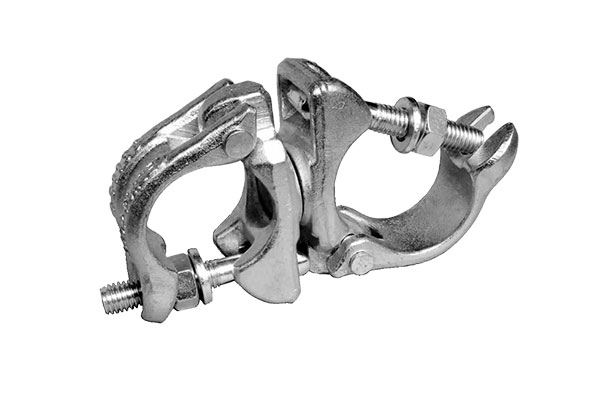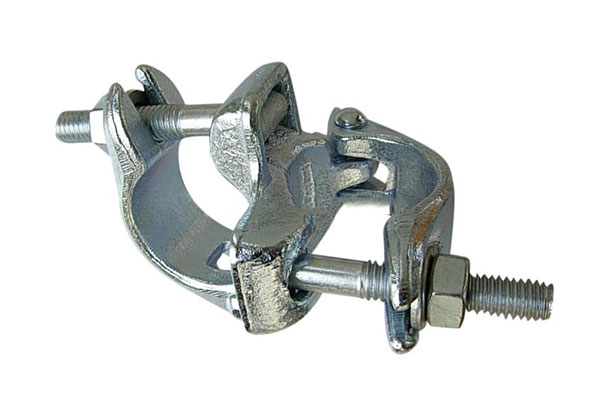Swivel Coupler vs. Double Coupler: What’s the Difference?
When constructing scaffolding systems, the choice of couplers plays a significant role in ensuring safety and structural integrity. Among the most commonly used scaffolding couplers are swivel couplers and double couplers. Though both are vital for securing scaffolding components, they serve different purposes and are suited for distinct applications. In this article, we will explore the key differences between swivel couplers and double couplers to help you make the right choice for your project.

What is a Swivel Coupler?
A swivel coupler is a versatile connector designed to join two scaffolding tubes at any angle. Its unique pivoting design allows flexibility in creating non-standard configurations, such as diagonal braces or structures in irregular spaces.
Key Features of Swivel Couplers:
- 360-Degree Rotation: The two halves of the coupler rotate around a central pivot, enabling connections at any angle.
- Applications: Ideal for securing diagonal braces, connecting tubes in tight spaces, and forming complex scaffolding designs.
- Material: Typically made of galvanized steel for durability and resistance to corrosion.
- Load Capacity: While strong, swivel couplers are mainly used for structural reinforcement rather than primary load-bearing.

What is a Double Coupler?
A double coupler, also known as a right-angle coupler, is a fixed connector that joins two scaffolding tubes at a 90-degree angle. This coupler is a cornerstone of standard scaffolding systems, ensuring stability and rigidity in horizontal and vertical connections.
Key Features of Double Couplers:
- Fixed 90-Degree Connection: Provides a secure, immovable link between two tubes.
- Applications: Commonly used to create the main scaffolding framework, securing horizontal ledgers to vertical standards.
- Material: Often made from heavy-duty steel or similar materials for maximum strength.
- Load Capacity: Designed for load-bearing, making them essential for the primary structure of scaffolding systems.

Swivel Coupler vs. Double Coupler: Key Differences
| Feature | Swivel Coupler | Double Coupler |
|---|---|---|
| Connection Type | Flexible, rotates at any angle | Fixed, right-angle connection |
| Primary Use | Diagonal braces, irregular angles | Main framework, horizontal and vertical junctions |
| Load-Bearing | Moderate load-bearing capacity | High load-bearing, ideal for primary support |
| Flexibility | High, allows for pivoting and angled connections | Low, connects only at right angles |
| Structural Stability | Provides flexibility but needs additional support | Ensures maximum stability in primary scaffold areas |
Which Coupler Should You Use?
- Choose swivel couplers if your scaffolding project involves complex angles, diagonal bracing, or irregular layouts.
- Opt for double couplers when building a stable and robust scaffolding framework for load-bearing purposes.
Conclusion
Both swivel couplers and double couplers are essential tools in scaffolding construction, each with its unique function. Understanding their differences ensures you select the right type for your specific needs, promoting safety and efficiency on the job site.
Shelter and Scaffolding Couplers
For premium-quality scaffolding products, including swivel and double couplers, trust a reliable scaffolding couplers supplier with proven industry expertise. A well-chosen coupler not only ensures the success of your project but also protects workers and structures alike.
Ready to enhance your scaffolding setup? Explore our range of scaffolding and coupler products designed to meet global safety standards. Contact us today!
